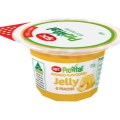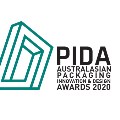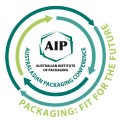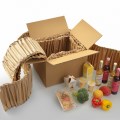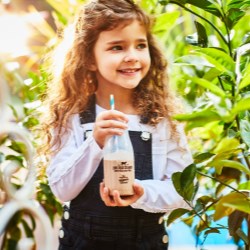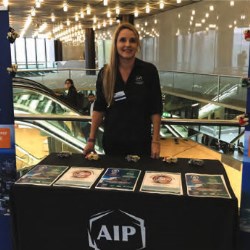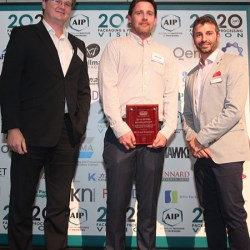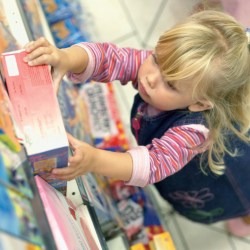If this is your company, CONTACT US to activate Packbase™ software to build your portal.
.jpg)

In September 2018 Australia’s 2025 National Packaging Targets were announced at a milestone industry event convened by the Australian Packaging Covenant Organisation (APCO). These targets build on commitments made on 27 April 2018 by Commonwealth, state and territory environment ministers and the President of the Australian Local Government Association to set a sustainable path for Australia’s recyclable waste.
The 2025 National Packaging Targets are:
• 100% of all Australia’s packaging will be reusable, recyclable or compostable by 2025 or earlier.
• 70% of Australia’s plastic packaging will be recycled or composted by 2025.
• 30% average recycled content will be included across all packaging by 2025.
• Problematic and unnecessary single-use plastic packaging will be phased out through design, innovation or introduction of alternatives.
With 2025 only six years away now is the time for your business to stop and re-evaluate current packaging designs and formats and develop a structured plan to ensure that all of your packaging adheres to the sustainable targets.
As the peak professional body for packaging education and training in Australasia the Australian Institute of Packaging (AIP) is often asked to simply provide a list of the exact substrates and materials that should be selected for every product on the market to meet the sustainable packaging targets. The answer unfortunately is never that simple. When you sit down to re-design your packaging please make sure that your team are fully informed and able to truly measure the reasons behind your decisions. Gather as much data as possible to be able to manage all expectations across your business and your supply chain.
We often remind packaging technologists and designers that the true role of packaging is its functionality. First and foremost, packaging is designed to ensure that a product is protected all the way across the supply chain until it is purchased by the consumer. This includes the vital role that packaging plays in ensuring the health and safety of the products and consumers, that product waste is kept to a minimum and the efficiency of the packaging can withstand the rigors of transport.
The functionality of the packaging cannot be ignored when re-designing your packaging to meet the 2025 National Packaging targets. ‘Sustainable Packaging’, in the simplest of terms, is packaging that performs the primary role of functionality but is also designed with the lowest possible environmental impact when compared to an existing or conventional pack. Finding the balance between functionality, commercial reality, consumer demands, and environmental criteria is the real challenge.
Existing Packaging
For existing packaging ask yourself what is the true purpose of the packaging you are currently using and then stop and re-evaluate whether the packaging can be improved and altered to either be reduced, reused or recycled. Challenge your design process and start incorporating the 2025 National Packaging Targets in all of your packaging. Re-design your on-pack communication to demonstrate the changes and to enable customers to better understand what your business has done to adhere to the 2025 targets. When reviewing conventional packaging ask yourself whether the materials you are currently using are truly right for Sustainable Packaging and consider alternatives.
New Product Development
For all New Product Development (NPD), incorporating Sustainable Packaging Design from the beginning will be a much easier process and this should ultimately become a fundamental part of your packaging design. NPD is the perfect time to focus on the number one Waste Management Hierarchy item of REDUCE. Ask the question what can you do to reduce your packaging before it is even designed and manufactured? Is your business doing everything in its power to reduce as much packaging as possible from your primary, secondary and tertiary products?
Lifecycle Assessment Tools and Lifecycle Thinking
Incorporating Lifecycle Assessment (LCA) Tools into your NPD process should be a consideration as LCA quantifies the environmental burdens associated with a product, process of activity over its entire lifecycle, from production of the raw material to disposal at End-of-Life. (as defined by INCPEN). Using LCA tools provides insight and better understanding of how to include Lifecycle Thinking into your packaging design processes and will help achieve the 2025 targets. Lifecycle Thinking also enables the team to determine whether the changes will have a greater or lesser environmental impact on other parts of your supply chain e.g. within transport, storage or disposal.
Understanding Recycling Facility Capabilities
We would also recommend that you look at the End of Life (EoL) of your product, or the expected disposal option for your packaging when the customer/consumer has removed the product. APCO has developed the Packaging Recyclability Evaluation Portal (PREP), which provides information to ensure that you are selecting the most appropriate packaging substrates that will actually be able to be reused, recycled or repurposed. The PREP tool is the starting point for the application of the new Australasian Recycling Label (ARL), which provides helpful and consistent on-pack information to the consumer on correctly disposing of the packaging items.
All manufacturers and their packaging teams have a responsibility to better understand the current recycling facilities and capabilities in this country, and those into which you may export your products, and ensure that your packaging is able to be sorted and processed through these systems.
A useful exercise is to take your designers, marketers and agencies down to the local Material Recovery Facilities (MRF) to see what happens to the packaging collected at kerbside. Also arrange with your suppliers to visit the paper, glass or plastics recycling facilities or review the RED Cycle program for soft plastics to really get a true view of what happens to your packaging at the End-of-Life. This exercise will ensure that the whole design team develops packaging that can be reused, recycled, composted or repurposed.
Auditing your Supply Chain partners
Are you manufacturing a new product with primary packaging that has been re-designed to meet the sustainable packaging targets only to find out your Supply Chain partners are incorporating non-recyclable materials in your secondary and tertiary packaging? Have you reviewed and audited your entire packaging supply chain? Are your partners working towards the 2025 National Packaging Targets and if they are not, ask them why?
There are so many decision points that need to be discussed when re-designing your packaging to meet the 2025 National Packaging Targets and many I have not covered. A great place to start is by contacting the Australian Packaging Covenant Organisation (APCO) who are tasked by the Federal Government to ensure that the targets are achieved. APCO have developed a substantial amount of information tools, checklists and guidelines that will guide you through the process and will help you optimise packaging to make more efficient use of resources and reduce environmental impact without compromising product quality and safety.
The Australian Institute of Packaging (AIP) has a focus on educating industry and can work with your teams to better understand the challenges you will face with packaging re-design. The AIP’s ‘Introduction to Sustainable Packaging Design’ training course, which incorporates a visit to a MRF, is a great way to shift your mindset. The Institute introduced the new training course in late 2018 and to date we have trained close to 800 people across Australia, New Zealand, Thailand and the Philippines. The AIP has also developed three new courses- ‘Lifecycle Assessment Tools for Sustainable Packaging Design’ and ‘Tools to Meet the 2025 National Packaging Targets: PREP & ARL’ and the Future of Flexibles Packaging - that are available for all of industry to attend.
Ultimately the goal is to achieve optimal outcomes for packaging functionality and to collectively meet the new 2025 National Packaging Targets. If you haven’t started your Sustainable Packaging journey as yet then we would encourage you to take the first step today. Ask the AIP how.
Nerida Kelton MAIP
Executive Director – Australian Institute of Packaging (AIP)
ANZ Board Member – World Packaging Organisation (WPO)



